The Amazon Rainforest is home to some of the most bizarre and fascinating creatures on the planet. From ones that defy the laws of nature to those that simply seem out of this world, this vast ecosystem shelters a variety of strange animals that have adapted to thrive in unique and often extreme environments. Let’s dive into some of the strangest creatures found in the depths of this mysterious jungle.
Potoo Bird
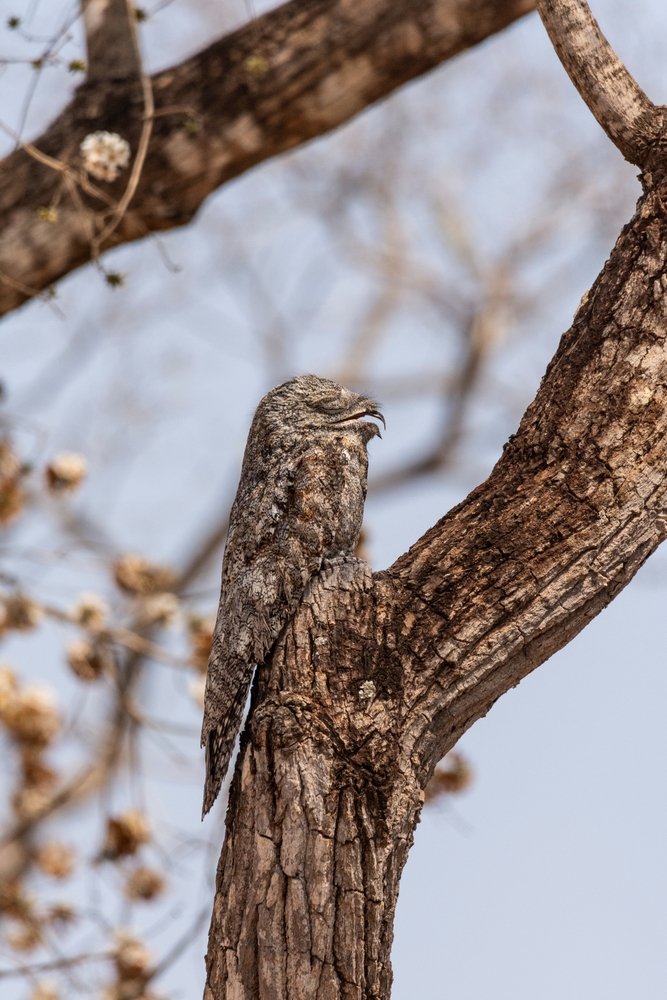
The Potoo bird is a master of disguise, with a hauntingly strange appearance. Its gray and brown plumage mimics tree bark so perfectly that it often blends seamlessly into the branches it perches on during the day. Nocturnal by nature, this bird has large, eerie eyes that help it hunt for insects at night. Its stillness during the day, often with its eyes half-open, makes it seem almost lifeless. Their camouflage and haunting appearance are truly bizarre, landing them on this list.
Glass Frog
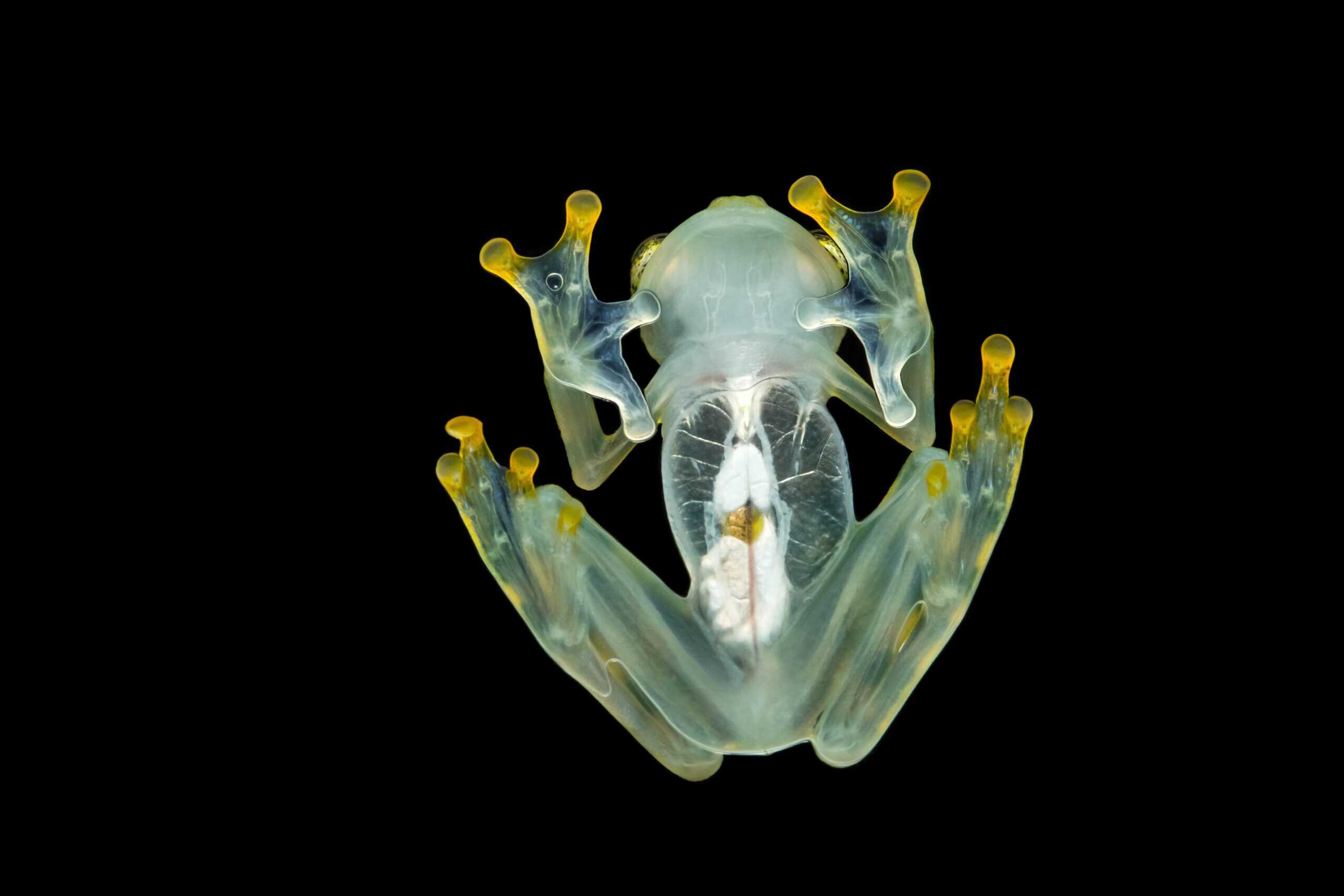
The Glass Frog gets its name from the translucent skin on its belly, through which its internal organs are visible. Found in the Amazon rainforest, this unique amphibian uses its see-through skin as a form of camouflage, making it harder for predators to spot. The odd combination of visible internal organs and green-tinted skin allows these frogs to blend into their environment, making them one of the Amazon’s strangest amphibians. These small creatures, measuring only a few inches in length, also display fascinating parental care, with some species guarding their eggs. However, their tiny size and delicate bodies make them vulnerable to larger predators.
Goliath Birdeater
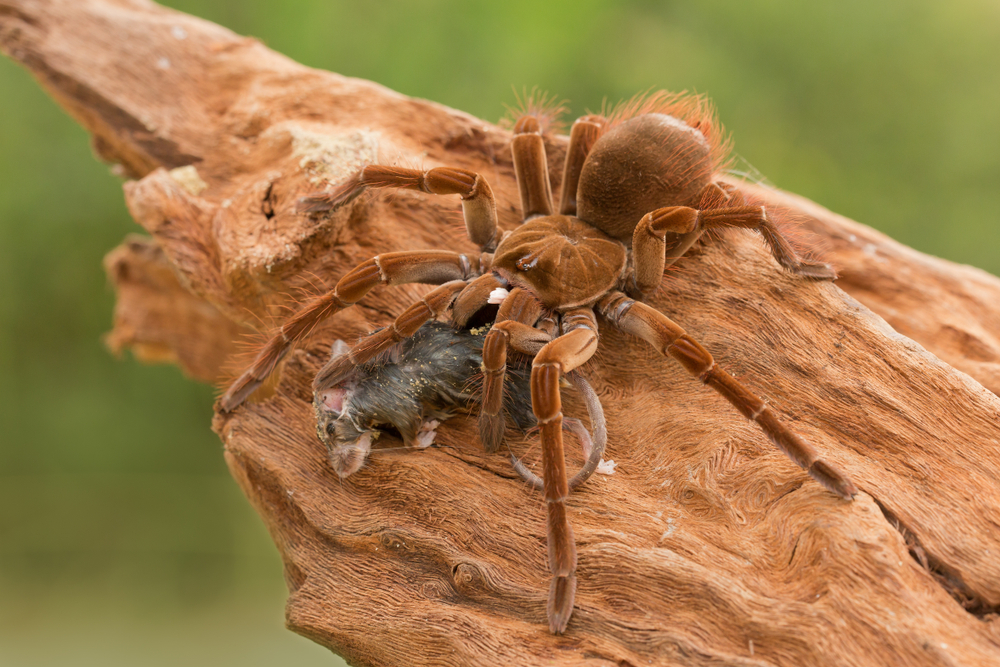
As the largest spider in the world, the Goliath Birdeater can weigh up to six ounces with a leg span of nearly a foot. Despite its name, this tarantula rarely preys on birds; instead, it feeds on insects, amphibians, and small mammals. Its enormous size and hairy body can be terrifying, but its behavior is relatively passive unless provoked. However, when threatened, the spider can rub its legs together to release tiny barbed hairs that cause irritation to predators. Found in the northern parts of the Amazon rainforest, its sheer size for its kind sets it apart as one of the scariest and strangest creatures in the jungle.
Amazonian Giant Centipede
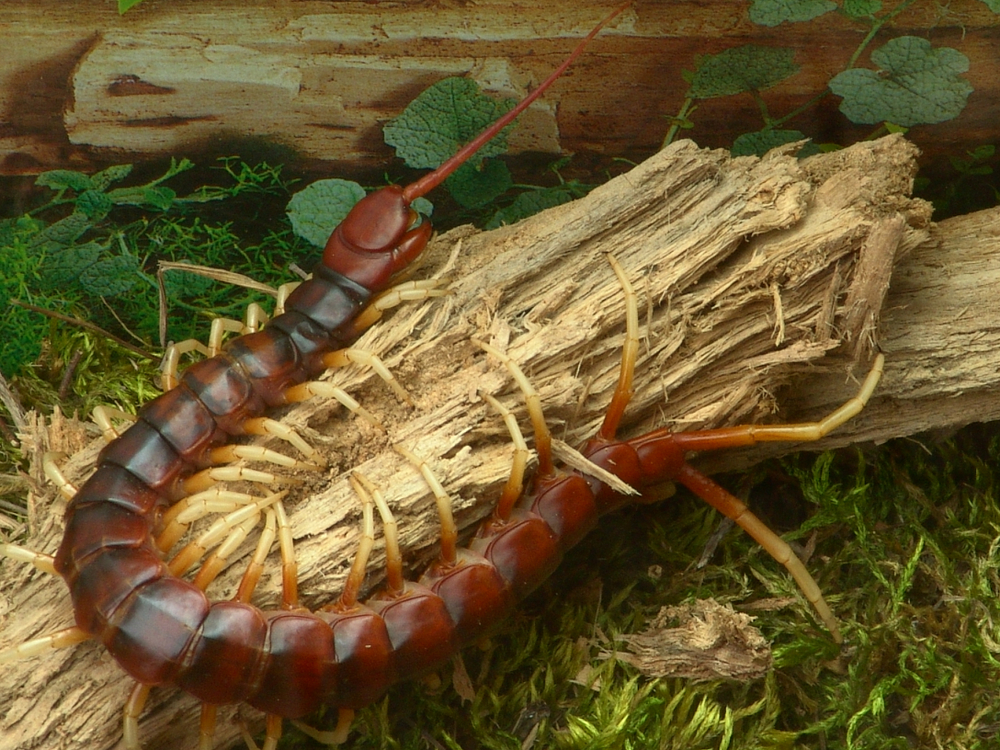
The Amazonian Giant Centipede is one of the largest centipede species in the world, growing up to 13 inches long. Known for its aggressive hunting behavior, this venomous predator feeds on insects, birds, and even small mammals. Its elongated body and fast movements make it both creepy and dangerous, as it uses its venom to immobilize prey. It even has the ability to climb trees and catch birds, showcasing its remarkable agility. This truly is a terrifying creature in the Amazon rainforest, especially with its ability to overpower much larger animals and its eerie appearance.
Pink River Dolphin
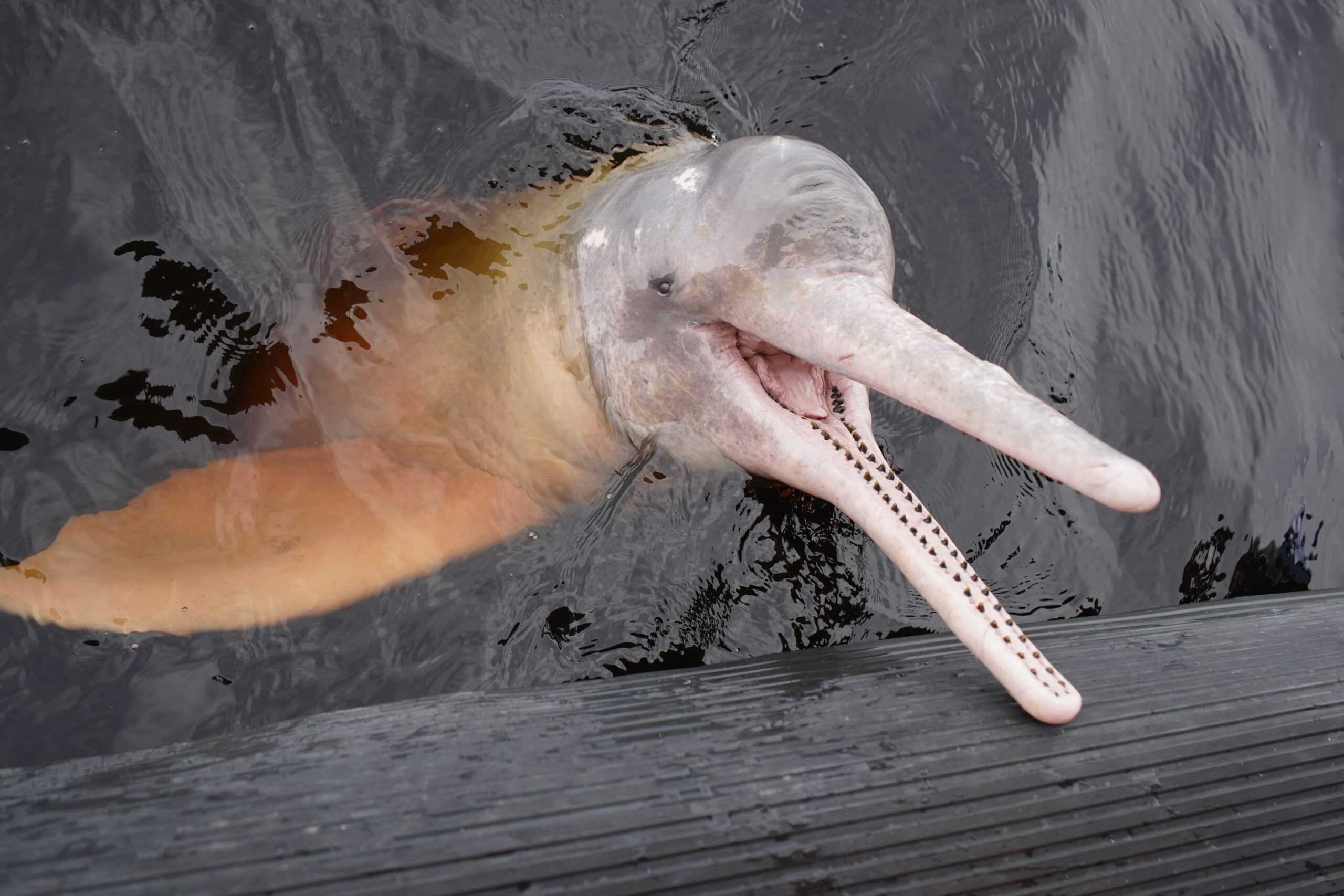
The Pink River Dolphin, also known as the Boto, is famous for its distinct pink hue. Found in the waters of the Amazon, these animals can grow larger than their marine cousins, reaching up to 8 feet in length. The reason behind their pink color is not entirely clear, though it may be due to blood vessels near the surface of their skin. Adding to their mystique, local folklore often portrays these dolphins as shapeshifters, believed to transform into humans. Their peculiar appearance and local legends make them creatures to be curious about.
Hoatzin
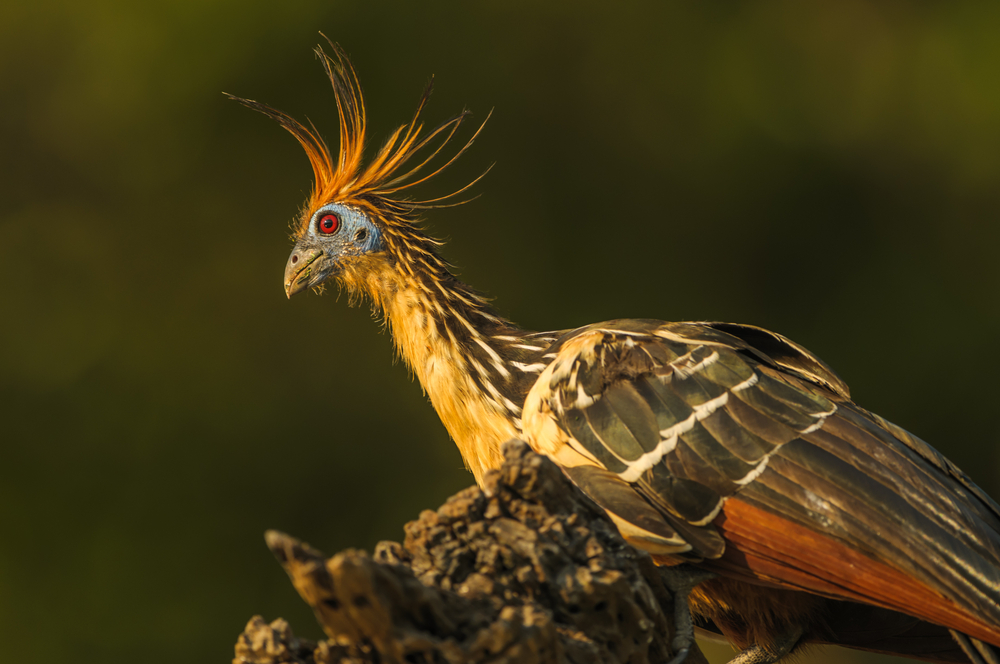
The Hoatzin, also known as the “stink bird,” is infamous for its foul odor, which is caused by its unique digestive system. This bird ferments leaves and other plant matter in its crop, much like a cow’s rumen, resulting in a smell reminiscent of manure. Found in swampy areas of the Amazon, it also has an unusual appearance, with a crest of spiky feathers on its head and bright red eyes. Its digestive system, combined with its prehistoric look, makes it one of the oddest birds in the rainforest. Even more bizarre, Hoatzin chicks are born with clawed wings, allowing them to climb trees before they can fly, a trait reminiscent of ancient birds.
Bullet Ant
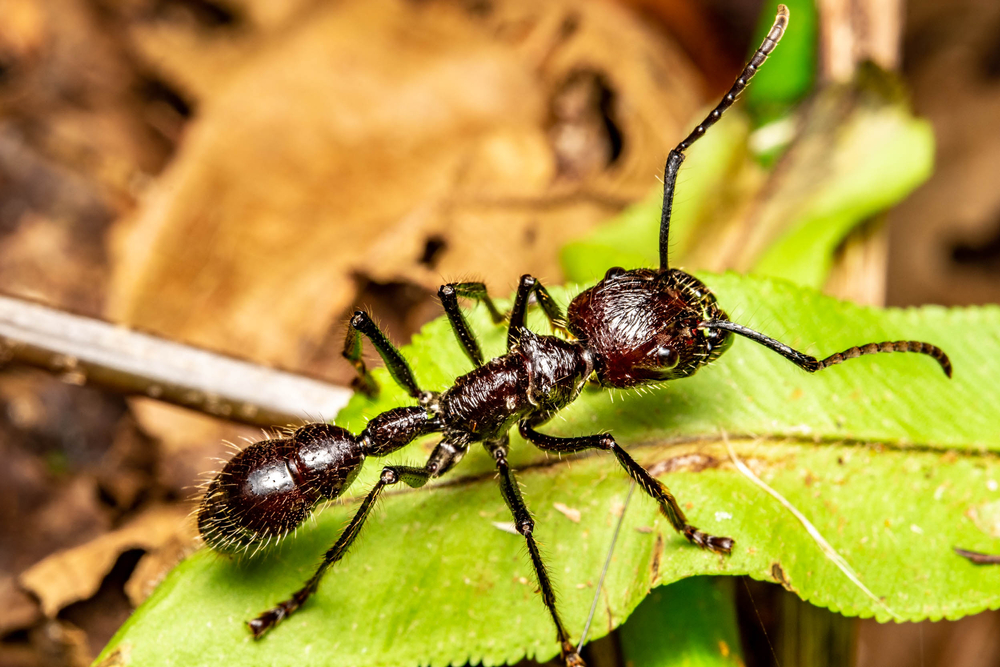
The Bullet Ant is feared for its excruciatingly painful sting, which has been likened to being shot. Found in the Amazon rainforest, this inch-long ant uses its powerful mandibles to latch onto its prey or intruders before delivering a venomous sting. The pain from this creature’s sting can last for up to 24 hours, leading it to be known locally as the “24-hour ant.” Its size, aggression, and intense sting make it a formidable insect in the jungle. Despite its small size, this ant is used in traditional rituals by some indigenous tribes, where participants endure its stings as a sign of bravery. Its venom contains a neurotoxin called poneratoxin, which affects the nervous system and intensifies the pain.
Amazonian Giant Leech
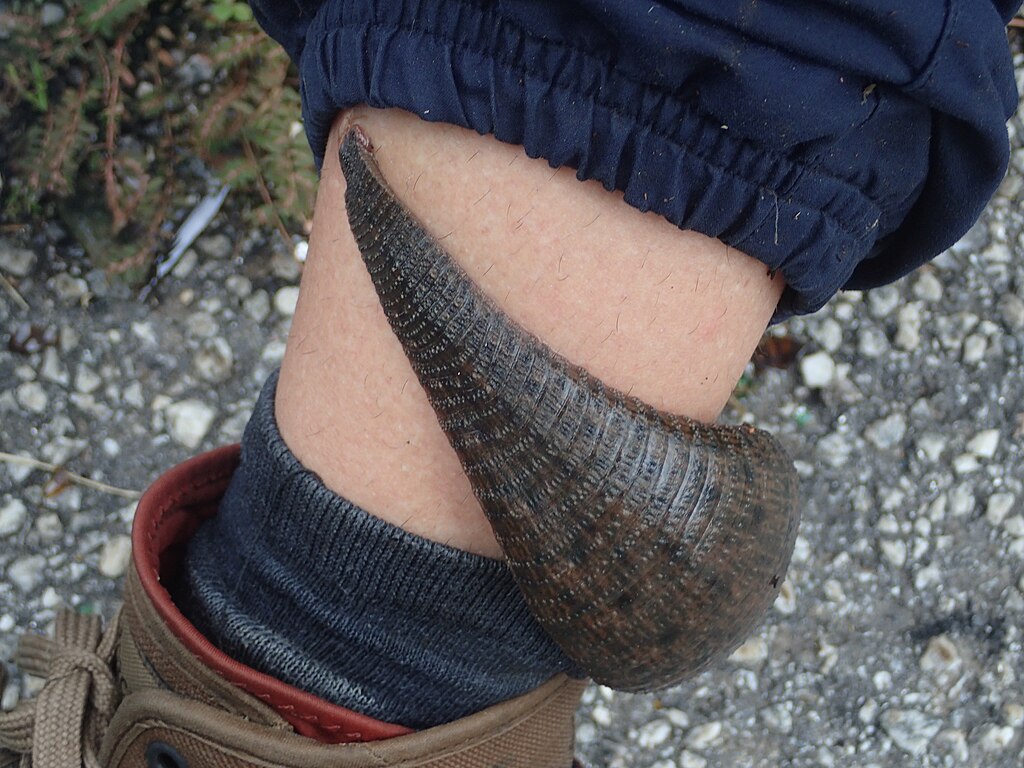
The Amazonian Giant Leech is one of the largest leech species, reaching up to 18 inches in length. Found in the murky waters of the Amazon, this bloodsucker can attach itself to a variety of animals, including humans, using its sharp teeth to pierce the skin. What’s even more unnerving is that the leech can suck up to ten times its body weight in blood. It also has a unique ability to detect prey by sensing movement in the water. Its size, feeding habits, and parasitic nature make this a truly strange and unsettling creature.
Arapaima
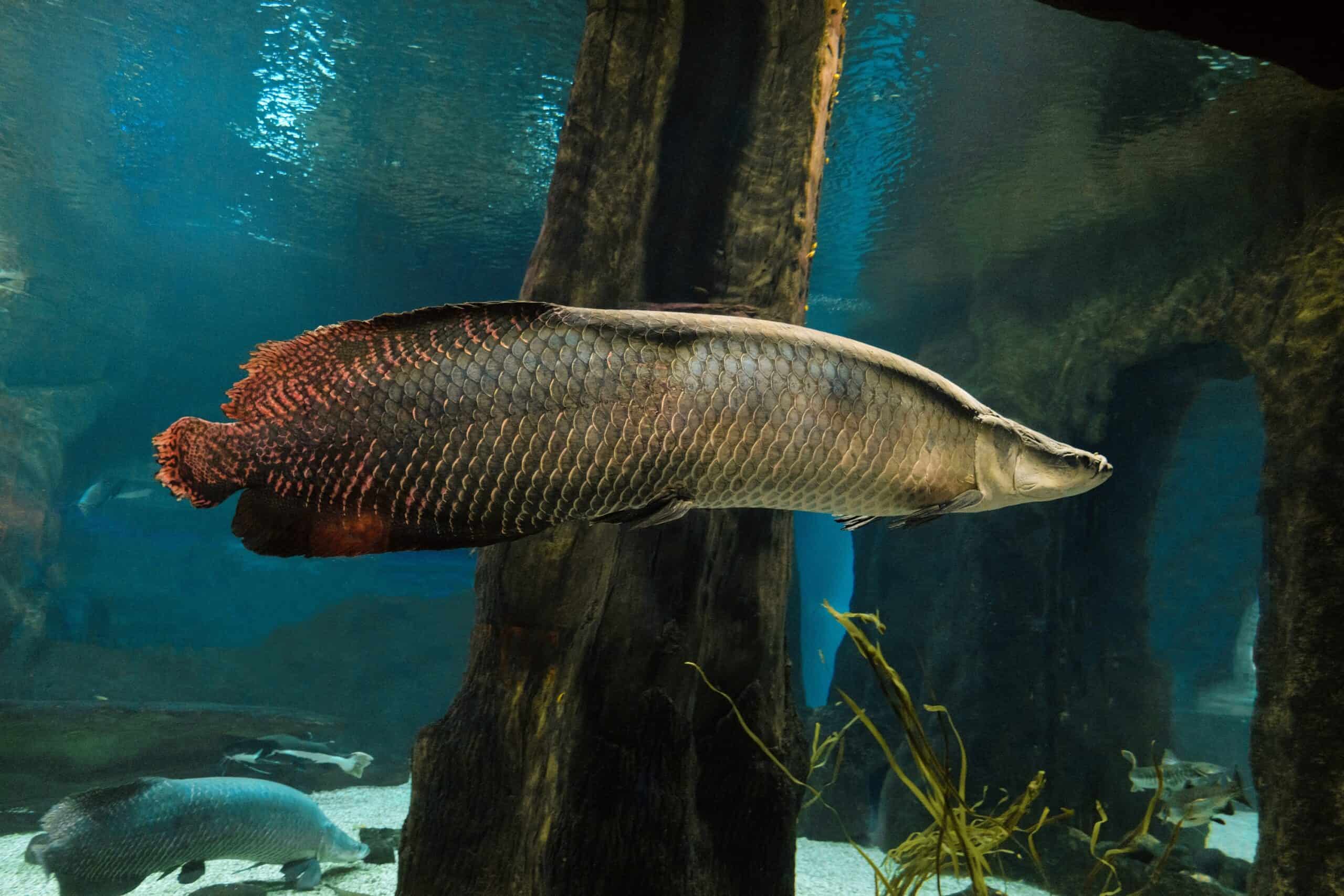
The Arapaima is one of the largest freshwater fish in the world, with some individuals reaching lengths of over 10 feet. This massive fish has evolved to gulp air from the surface due to low oxygen levels in its habitat. Known for its tough scales, which are used by local communities as tools, it is a top predator in its ecosystem. Its size and unique respiratory system make it a fascinating, yet strange, resident of the Amazon. In addition, Arapaimas can leap out of the water with tremendous force, which they use to stun prey or avoid predators.
Brazilian Wandering Spider
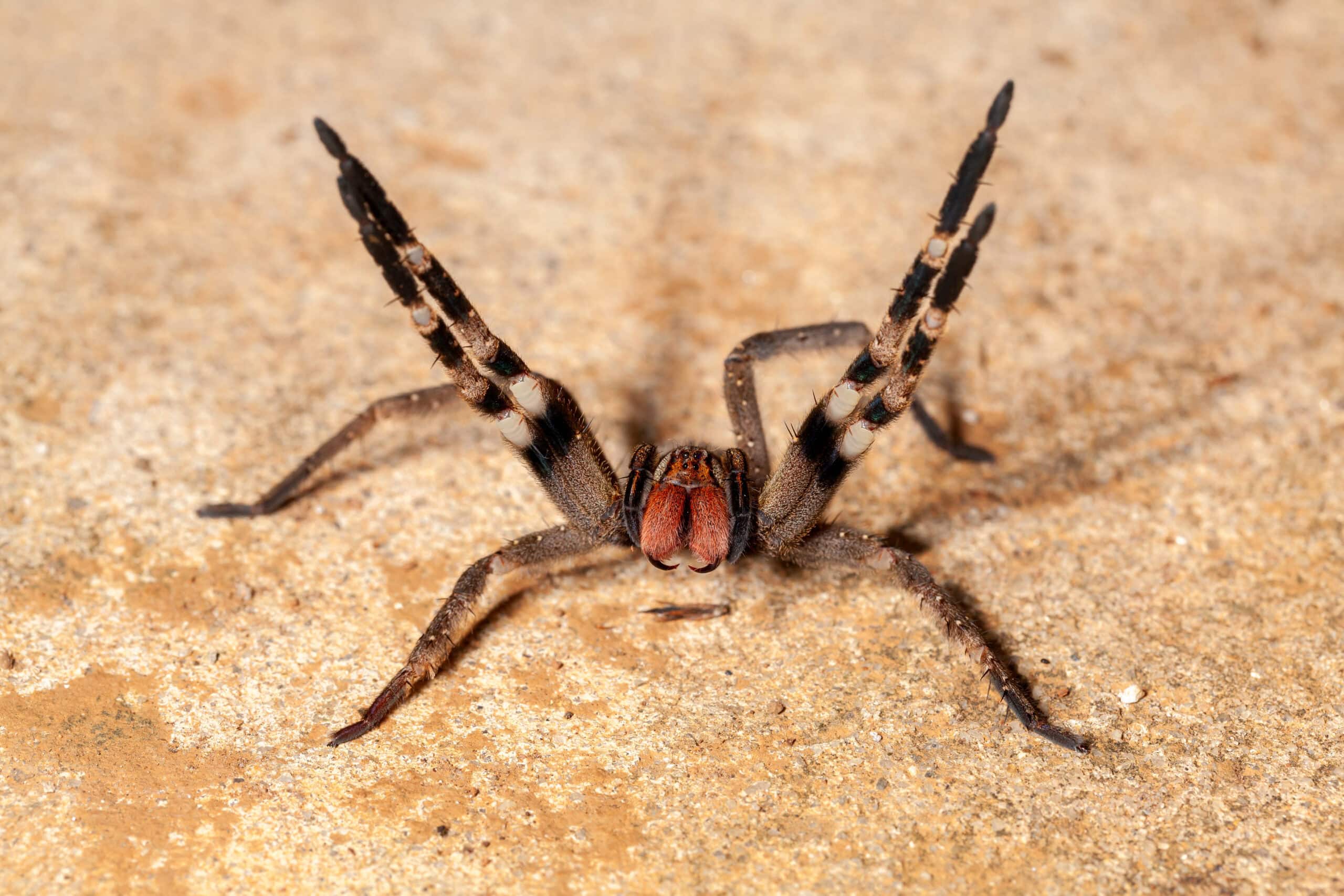
The Brazilian Wandering Spider is one of the most venomous spiders in the world. Unlike most spiders that rely on webs, this aggressive arachnid actively hunts its prey on the forest floor. Its venom can cause extreme pain and, in rare cases, death, earning it a fearsome reputation. Additionally, their venom contains a unique compound that can cause prolonged, painful erections in humans, adding to its strange and dangerous nature. Its nocturnal behavior, coupled with its potent venom and large size, make it a nightmarish creature lurking in the Amazon’s undergrowth.
Giant Otter
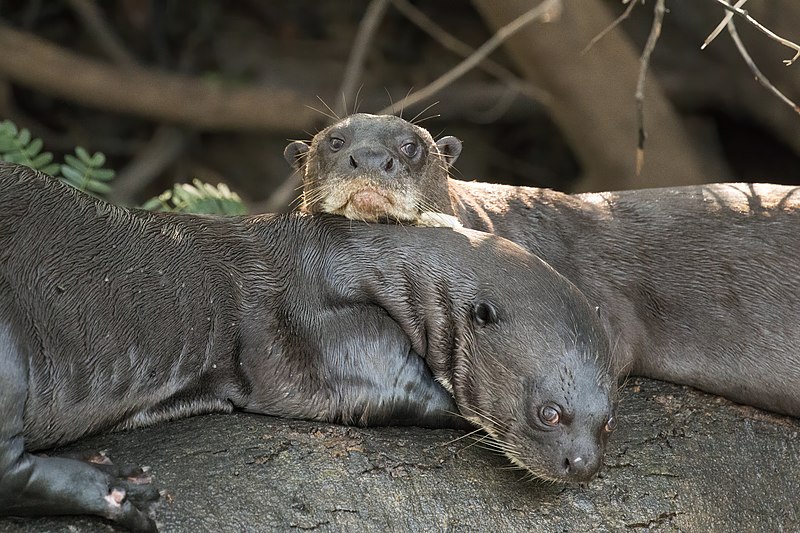
The Giant Otter, often referred to as the “river wolf,” is the largest otter species in the world. These carnivores grow up to 6 feet in length and are highly social, living in groups along the Amazon’s rivers. Their loud vocalizations and coordinated hunting tactics make them highly efficient predators, capable of taking down large fish. Despite their playful appearance, they are known to be aggressive hunters, and their size makes them stand out. Interestingly, these otters also defend their territory fiercely against much larger animals, including caimans and jaguars, adding to their fearsome reputation.
Electric Eel
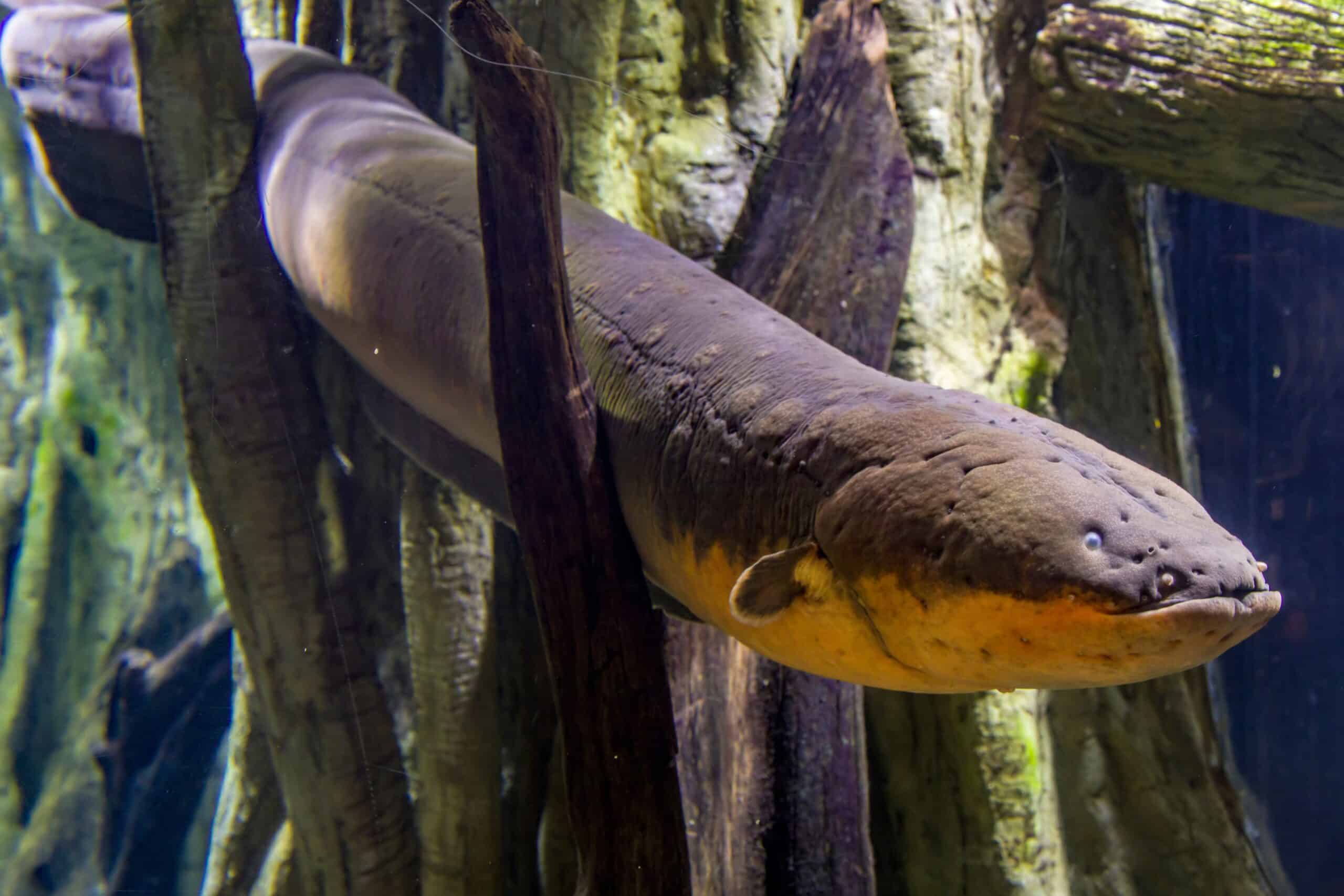
The Electric Eel is not an eel at all, but rather a knifefish that can produce electric shocks of up to 600 volts. Found in the murky waters of the Amazon, this animal uses its electric charge to hunt prey and defend itself from predators. What makes it even stranger is its ability to generate electricity through specialized organs, making it a natural and living battery. It also uses low-voltage pulses for communication and navigation, adding to its list of impressive traits. Its shocking (pun-intended) abilities and the fact that it is more closely related to catfish than eels add to its intrigue.
Candiru Fish
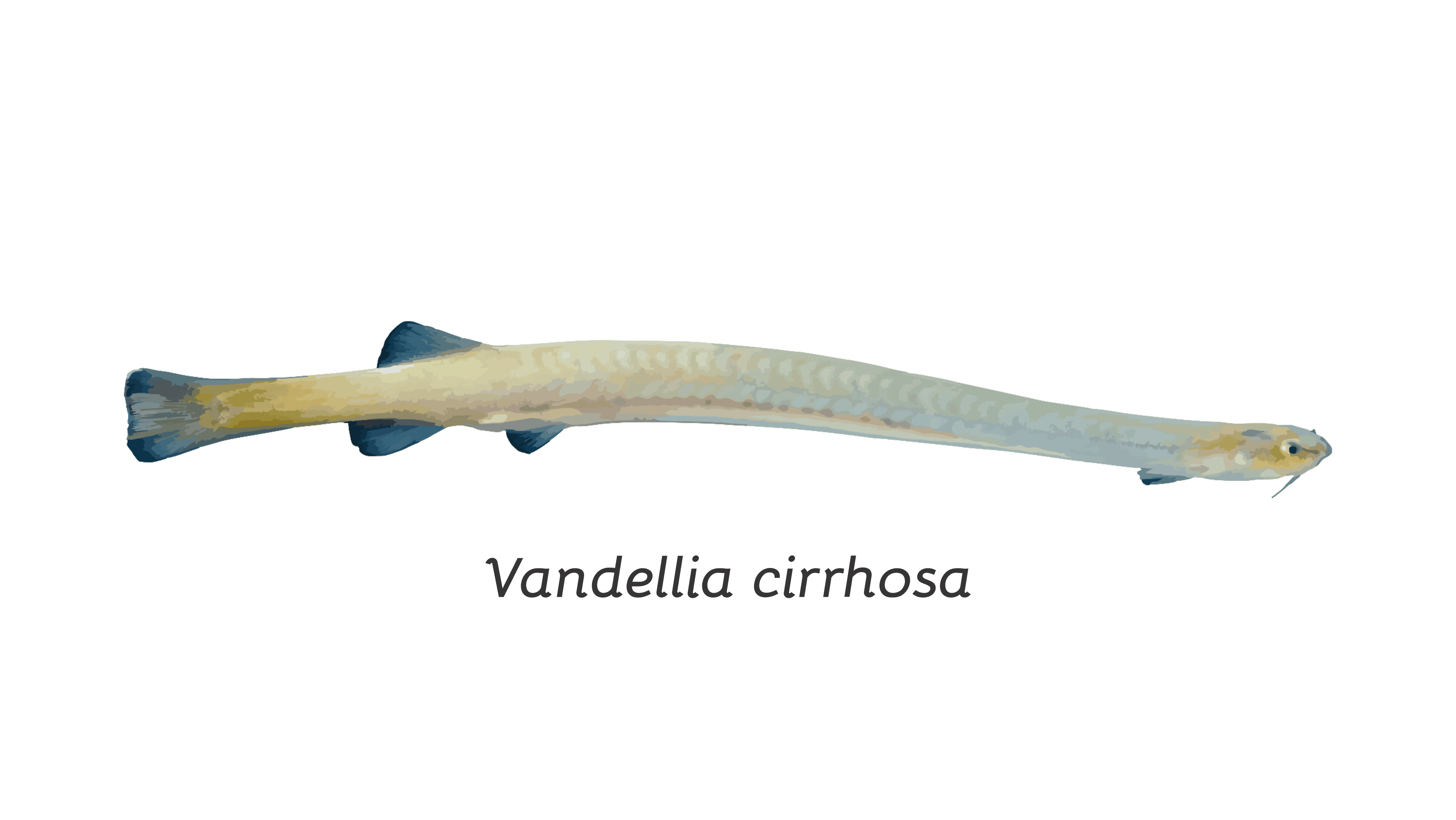
The Candiru Fish is notorious for its parasitic behavior and extreme reputation. This small, translucent catfish, found in the Amazon basin, is known for entering the gills of larger fish to feed on their blood. Its most alarming ability, however, is the folklore claiming it can enter human orifices, like the urethra, causing immense pain. While the truth behind these tales is debated, its parasitic feeding habits and small, needle-like body certainly add to its strangeness. Despite being only a few inches long, it is still one of the most feared creatures of the Amazon.
This article originally appeared on Rarest.org.
More from Rarest.org
13 Futuristic Concept Cars You Need to See

The world of concept cars offers a fascinating glimpse into the future of automotive design, blending cutting-edge technology with bold, innovative ideas. From electric hypercars to autonomous vehicles, these futuristic models showcase how transportation is evolving. Read More.
15 Surreal Rock Formations Carved by Nature’s Forces

Nature has an incredible way of shaping the world around us, and some of its most fascinating creations are the surreal rock formations found across the globe. Carved by wind, water, and volcanic activity over millions of years, these formations offer a glimpse into the Earth’s geological history while captivating the imagination. Read More.
15 Coins with Historical Significance

Coins are more than just currency; they are pieces of history that tell the stories of the civilizations that created them. Throughout time, certain coins have gained particular historical significance, whether due to their rarity, the events they commemorate, or the remarkable periods they represent. Read More.
